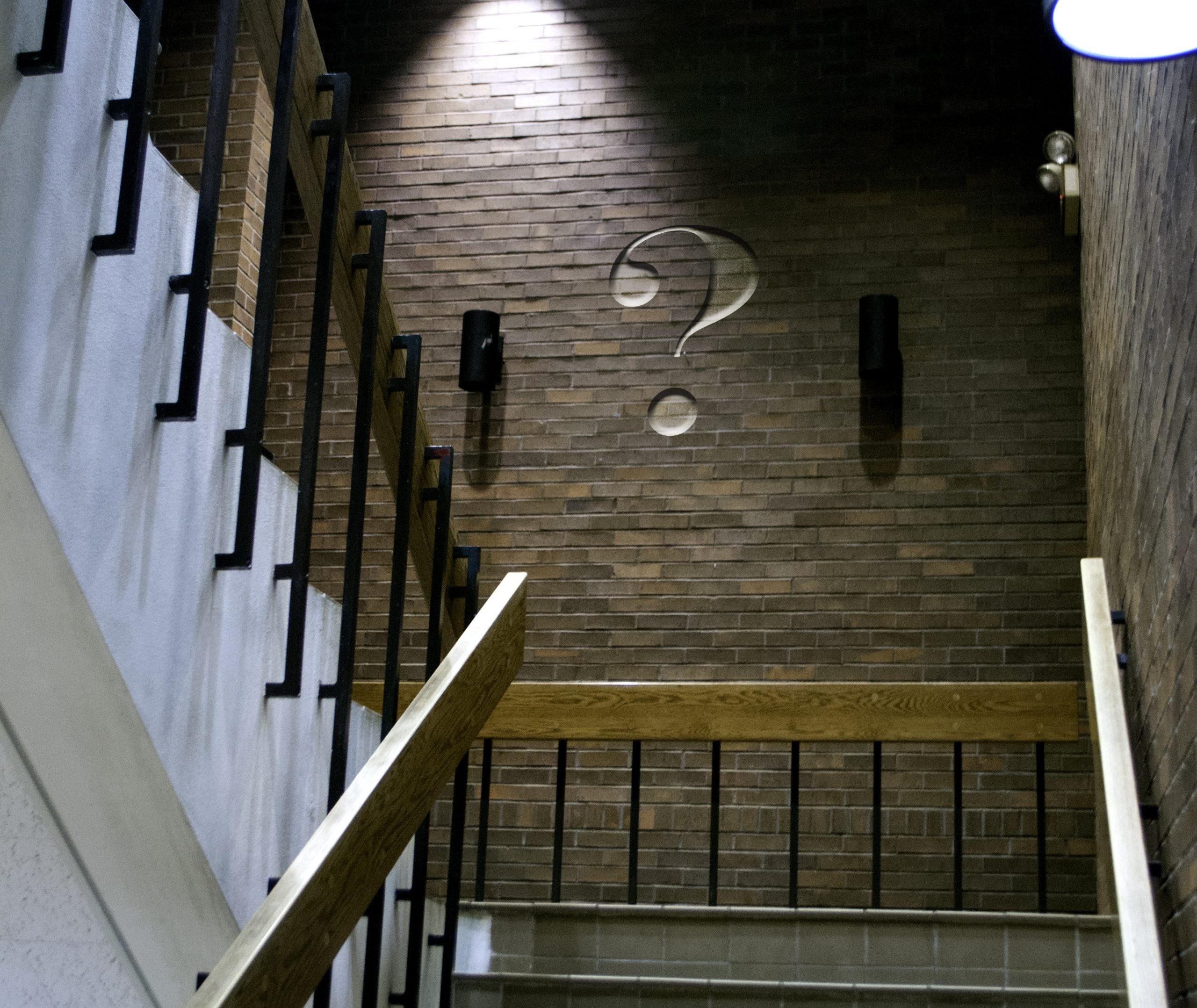You may not notice them every time you walk by, but you just might miss them when they’re gone.
On February 3, a painting was lifted off the wall of the Jackson Campus Center. It was one of a series of abstract paintings, located on the stairway next to the Dean of Student’s office. The title of the stolen painting was “Defy.”
Thus began a rash of thefts that culminated in five missing campus owned paintings and pictures. It ended earlier this week with the recovery of all five undamaged works and the apprehension of two suspects by Safety and Security.
The artworks were taken from the Campus Center, the Folke Bernadotte Memorial Library, Runstrom Hall and Christ Chapel.
Of all the stolen artworks, perhaps the most notable was the portrait of King Gustavus Adolphus, which was taken from its regular spot in the main stairwell of the Folke Bernadotte Memorial Library.
College Archivist Jeff Jenson reported the theft of King Gustavus to Campus Security, who later informed the St. Peter Police Department.

“At first I thought it was knocked off its frame or something,” said Jenson. “I checked the custodial areas, the trash … then I got a sick feeling when I realized it must have been taken.”
Iota Beta Sorority, one of the first literary societies on campus, donated the painting to the College in 1913. It has enjoyed its current location in the Library stairwell for more than a decade.
Eyewitness accounts placed the theft somewhere between the hours of 2 to 4 p.m, well within normal operating hours. According to Jenson, the only way in or out of the building at that time would have been through the front doors.
“The disturbing thing is that they could just walk out the door [with a 4×3 foot painting] … we are a trusting community. They misused that trust,” said Library Department Chair Barbara Fister.
“A piece of the common good was gone,” said Jenson, “something that couldn’t be replaced. And on top of that, a picture of Gustavus Adolphus? It kind of goes against the values of our institution.”
According to Director of Campus Safety Ray Thrower, all five artworks have been recovered, none of them damaged, and two male suspects have been identified. A Collegiate Fellow reported seeing the suspects exiting the Library on the day of the theft, carrying a “covered up large object.”
“There’s a lot of strange things that happen in the library. We see a number of things come in through the door,” said Jenson.
According to Thrower, the suspects stated that the return of the artwork was conditional upon its being displayed more prominently on campus. There is no indication, as of yet, whether these demands will be met, seeing as how both the artwork and the suspects have since been apprehended.

I see some great assumptions in this qutseion. First, we are looking to enrich and enhance learning opportunities. That would assume that a) there is learning going on and b) the learning going on is in need of enriching and enhancing. What do we enrich and enhance? We enrich and enhance basic knowledge. Knowing basic geometric formulas is basic knowledge. The use of technology should be geared towards enriching the students’ understanding of how those formulas play a role in their lives. For instance, if a new building is going to be constructed on campus, are students given the opportunity to design the facility digitally, both inside and out, to enhace their understanding of major architectual features? This would leverage technology in an appropriate fashion for college level students. Online collaborative environments through Gmail or other web-based systems could be created that would include discussion, collaboration, and competition. The other assumption is based on a qutseion can technology actually create an opportunity? No, by itself, it is a limited creation. Someone must creatively understand the power of technology and the role it MAY play in enrichment and enhancement. Educators with diversified abilities create the opportunities for technology to be used as an effective device. Twitter is inherently worthless unless a teacher knows how to use it to make a video interactive by allowing the students to post comments on a live feed during the video or presentation. Creative writing is much more enjoyable when a Google doc is used and five people are asked to write on the same document at the same time and create a coherent piece of writing. These things encourage higher thought processes, at both the individual and cooperative level. I do these things with 7th graders in a pubic school with relatively good access to technology. Just last week my students created Google spreadsheets as a class that contained population density information from each student’s ficticious country. Then, students discussed via Google chat the pros and cons of living in a country with various densities and finally as a class answered quesitons on a document I created for them and shared via Google docs. Who needs a test when I do this instead?
Someone seems to have a thing for masterpieces created by local artists.